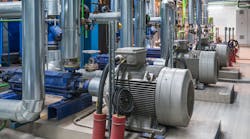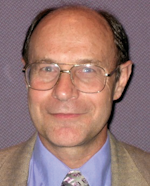I discussed aspects of cogeneration in a few earlier columns (May 2019’s “Get All Steamed Up,” and March’s “Take a Closer Look at Cascaded Efficiency”). This is a huge subject, and I am returning to it again both to present some basic principles and to provide a cautionary tale.
Cogeneration is the sequential production of two distinct forms of useful energy from a single primary energy source. Most often, the two different forms of energy are heat and power (i.e., “combined heat and power” or “CHP”). In large-scale industrial applications, the heat typically is delivered via steam, and the power generally is either electric or shaft power delivered directly from a steam turbine to a pump or a compressor.
Most power in the United States comes from heat engines (e.g., gas turbines, steam turbines, and internal combustion engines) using fossil fuels and operated in a cycle. These devices must adhere to one of the most fundamental principles of physics: the second law of thermodynamics — which can be stated as thus: “Cyclical heat engines can never convert all of the incoming heat to power — they always reject some of it.” Raising the temperature of the hot portion of the cycle and lowering the temperature of the cold portion can improve the efficiency; but for any given hot and cold temperatures, the efficiency never can exceed that of an ideal “Carnot cycle” operating between the same temperatures.
Commercial gas turbines and steam turbines typically reject at least 60% of their incoming heat, so their standalone energy efficiency is less than 40%. However, if the exhaust is hot enough, its heat can be recovered for process heating or other purposes. In such arrangements, it’s possible sometimes to make beneficial use of 80% or more of the primary energy, so the overall energy efficiency can reach 80% or higher. There is a tradeoff though: making the exhaust hot enough for use reduces the standalone efficiency of the heat engine, so it produces less power per unit of heat supplied.
Don’t Forget Training
A number of years ago, I was on the design team for a major petrochemical plant. The preliminary design included a large (20-MW) compressor driven by a condensing steam turbine. The steam entered at 600 psig and exhausted below atmospheric pressure, at 3.7 psia (7.5 in Hg). The exhaust steam, at 150°F, wasn’t hot enough for beneficial use, so it went to a water-cooled condenser and the heat was rejected to ambient through the cooling water system.
An adjacent plant consumed 100,000 lb/h of 150-psig steam, obtained by passing steam from the 600-psig header through a letdown valve. I saw an opportunity for cogeneration: replace the condensing steam turbine with an extraction/condensing turbine. In this design, all the steam passes through the front end of the turbine, after which 100,000 lb/h is withdrawn through the extraction port at 150 psig for use at the adjacent plant. The remaining steam passes through the back end of the turbine and then goes at 3.7 psia to the condenser. The steam that passes through the extraction port sequentially is used to produce power in the turbine and to deliver heat to the adjacent plant. The design change reduces both the condenser duty and the overall steam requirement, saving the site more than $1,500,000/yr.
Several years later, I returned to the plant with a team to conduct a site-wide energy assessment. We found it was still producing large amounts of 150-psig steam from 600-psig steam with the letdown valve; I assumed the site had decided against my extraction turbine recommendation. Not so! The machine had been installed but the operators didn’t know how to operate the extraction port. Consequently, the turbine was running in condenser-only mode. Simply recommending the extraction/condensing turbine wasn’t sufficient; operator training also was required. After the assessment, the operators were trained, the extraction port was commissioned, and the site benefitted from this cogeneration opportunity.
Have any of your improvement projects been hampered by lack of operator training? Let me know if you can share examples.



